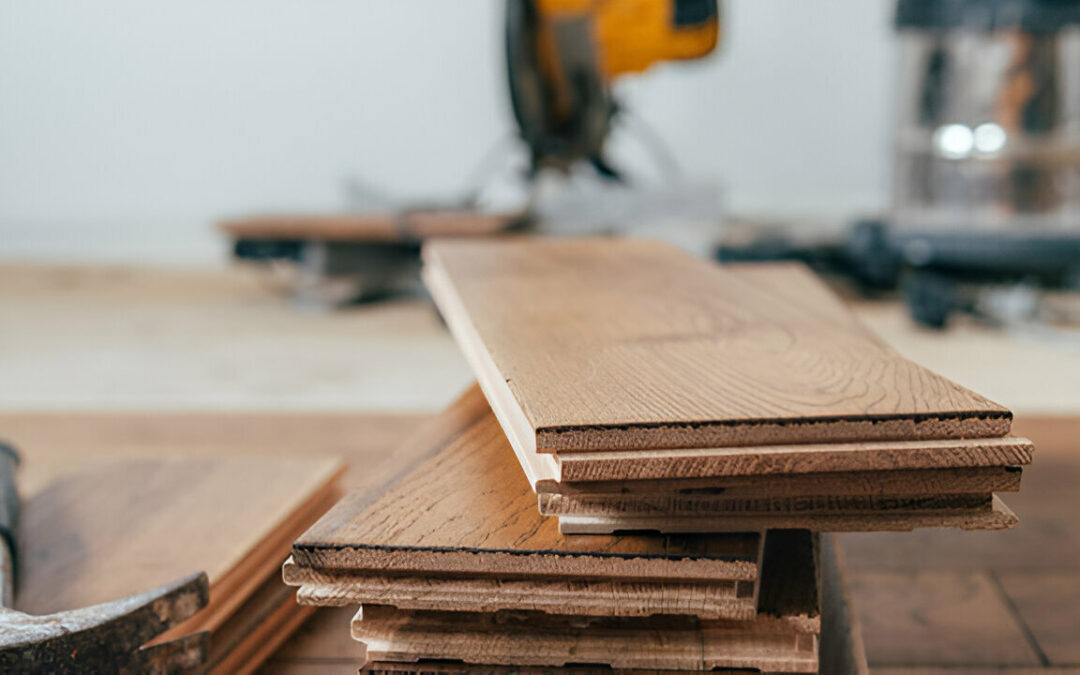When it comes to maintaining hardwood flooring, you might be surprised at how simple yet crucial the right practices can be.
Regular cleaning, preventive measures, and timely refinishing all play a significant role in preserving the beauty and durability of your floors.
You may think vacuuming and mopping are enough, but there are other factors to consider that could impact the long-term health of your hardwood.
Curious about what specific steps you can take to ensure your floors remain in top shape?
Regular Cleaning Practices
Proper maintenance is essential to preserve the beauty and longevity of your hardwood floors.
Key Maintenance Practices:
Regular Cleaning:
- Sweep or Vacuum: Regularly sweep or vacuum your floors using a vacuum with a soft brush attachment to remove dust, dirt, and grit that can scratch the surface.
- Damp Mop: Mop your floors regularly with a slightly damp mop and a wood floor cleaner specifically designed for your finish. Avoid excessive moisture, as it can seep into the wood and cause damage.
- Microfiber Mops: Consider using microfiber mops, which effectively trap dust and dirt without scratching the surface.
Protect from Scratches:
- Use furniture pads on the legs of furniture to prevent scratches.
- Lift furniture rather than dragging it across the floor.
- Place rugs or mats at entryways to trap dirt and moisture before they reach the hardwood.
Minimize Moisture Exposure:
- Wipe up spills immediately to prevent moisture from penetrating the wood.
- Avoid excessive moisture exposure, such as from leaky pipes or standing water.
Control Temperature and Humidity:
- Maintain consistent temperature and humidity levels in your home to minimize wood expansion and contraction, which can lead to gaps or cracks.
By following these simple maintenance practices, you can protect your hardwood floors from wear and tear, maintain their beauty, and ensure they provide years of enjoyment.
Preventive Measures
To maintain the beauty and longevity of your hardwood floors, it’s crucial to implement proactive preventive measures:
Preventative Measures:
- Entryway Mats: Place mats at all entrances to trap dirt and moisture before they reach your floors.
- No-Shoes Policy: Encourage a no-shoes policy in your home to minimize the introduction of dirt and debris.
- Furniture Protection:
- Use felt pads or furniture protectors on the legs of furniture to prevent scratches and dents.
- Lift furniture rather than dragging it across the floor.
Environmental Control:
- Humidity Control: Maintain consistent humidity levels in your home. Use a dehumidifier in summer and a humidifier in winter to minimize wood expansion and contraction.
- Sunlight Control: Use curtains or blinds to limit direct sunlight exposure, which can cause fading and discoloration of the wood.
Regular Cleaning:
- Sweep or Vacuum Regularly: Regularly sweep or vacuum your floors to remove dust, dirt, and grit.
- Damp Mopping: Use a slightly damp mop and a wood floor cleaner specifically designed for your finish. Avoid excessive moisture.
By implementing these preventive measures, you can significantly minimize wear and tear, protect your hardwood floors from damage, and ensure they maintain their beauty and luster for years to come.
Refinishing and Repairs
Refinishing your hardwood floors can revitalize their appearance and extend their lifespan.
When Refinishing is Necessary:
- Wear and Tear: Signs of wear and tear, such as scratches, dents, and a dull finish, may indicate the need for refinishing.
- Water Damage: Water damage can cause discoloration and warping, necessitating refinishing.
Refinishing Process:
- Assessment: Assess the extent of the damage to determine the necessary course of action.
- Minor scratches may require minor repairs or touch-ups.
- Deeper gouges may require plank replacement.
- Sanding: The existing finish is sanded down to remove imperfections and prepare the wood for a new finish.
- Finish Application: Choose between oil-based finishes (more durable) and water-based finishes (faster drying, lower odor).
- Drying Time: Allow adequate drying time between coats.
Professional Refinishing:
- Expertise and Experience: Professional refinishers have the expertise and experience to ensure a high-quality and long-lasting finish.
- Peace of Mind: Professional refinishing provides peace of mind knowing the job is being done correctly and efficiently.
Refinishing your hardwood floors can significantly enhance their appearance and extend their lifespan.
Whether you choose to DIY or hire a professional, proper refinishing can restore the beauty and luster of your hardwood floors for years to come.
Maintaining hardwood floors involves a combination of regular cleaning, preventive measures, and timely refinishing to preserve their beauty and durability.
By incorporating simple practices such as sweeping, using furniture pads, and controlling humidity and sunlight exposure, you can significantly enhance the longevity of your floors.
It’s important to address any signs of wear promptly and consider professional refinishing when necessary to restore their shine.
With these efforts, your hardwood floors will not only look stunning but also provide lasting enjoyment for years to come.

